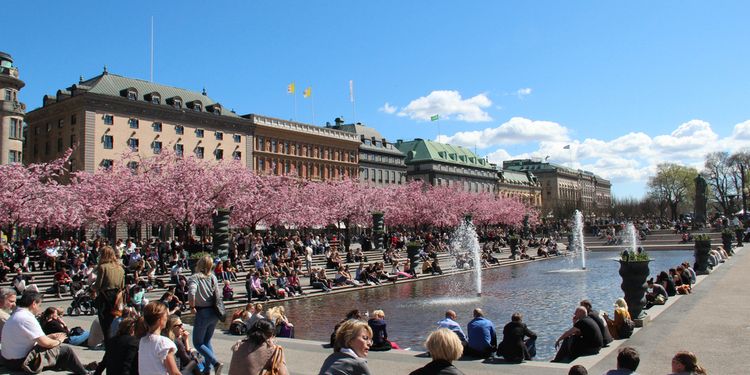
If you're planning a long-term move abroad with the hope of becoming a permanent resident and, after that, apply for citizenship, many questions have to be addressed. For those who are still working but looking to retire, retirement pension is a determining factor. Will you enjoy a better standard of living and other benefits when retiring in your new country? If you're still unsure, have a look at some of the world's best pension systems.
Netherlands

Over the past year, there was a significant improvement in the Dutch pension system. It's worth noting that employees in the Netherlands are entitled to two types of pensions – the first is a flat rate public pension while the second is a quasi-compulsory occupational retirement pension that depends on different industrial agreements. Most employees, including foreign professionals, are registered in occupational pension schemes which include defined benefit plans for the workforce as a whole. Calculations for the pensions plans depend on the average cumulative salary. Today, the Netherlands provide some 80 pension funds that vary from one professional branch to another. Moreover, there are eleven other plans for liberal professions. Following the 2010 reforms, the retirement age will gradually increase from 65 years to 66 years in 2020 and 67 years in 2025. Retirees are also eligible for a 5% premium for each additional year from the age of 65. Also, the lump sum depends on the household composition and the age of each family member. For example, a couple is entitled to 100% of the pension while a single person is entitled to 70%.
Denmark

The Danish pension system also improved significantly in recent years. It's therefore not surprising that Denmark is among is among the world's most generous countries regarding retirement pensions. The pension system relies on two main pillars: the folkepension or "universal scheme" and the Arbejdsmarkedets Tillægspension defined as "complementary contribution". Compulsory for all employees in Denmark, the Arbejdsmarkedets Tillægspension includes other schemes such as private pensions and categorical pensions. To be eligible for a retirement pension in Denmark, you must either be a Danish citizen or a national of the European Union or the European Economic Area or be a resident or have lived in Denmark for at least 90% of the time between the age of 15 and the legal retirement age. There's no residency requirement for the supplementary pension. All employees are eligible for this pension plan provided that they have contributed according to the collective agreements for each branch. Also, the legal retirement age in Denmark is expected to rise to 67 years by 2022.
Finland

The Finnish pension system comprises two complementary schemes, namely occupational pensions and national pensions which include a retirement guarantee. Occupational pensions mainly depend on individual earnings or business income. All employers are required to register their employees, including foreign professionals, to a pension scheme. Contributions are levied on each employee's salary. National pensions and the pension guarantee are for retirees who either were not working or those receiving a low retirement pension. The sum granted through the occupational pension in Finland generally depends on the number of working years and wages earned during the total working period. Also, the retirement age, which is 63 years and three months today, is expected to rise to 65 in 2027.
Australia

From 2035, Australians will only be able to retire at the age of 70! However, Australia has one of the world's most efficient pension systems which splits into three categories: the old-age pension, the retirement guarantee and voluntary pension contributions and other forms of private savings. Old-age pension is financed by tax revenue while retirement guarantee depends on compulsory employer contribution to private retirement schemes. These are levied from wages. Also known as the Superannuation, old-age pension contribution starts from the moment you land a job in Australia. It also applies to holders of the Working Holiday Visa (WHV). What's also interesting is that only employers make contributions for employees earning less than AU $ 450 per month. Today, workers benefit from their retirement pension when they reach the age of 65. In 2023, the legal retirement age will increase to 67 years before reaching 70 years in 2035. It's also worth noting that the latest Australian pension reform dates back to 1908.
Sweden

In Sweden, working more means earning more. That said, the Swedish government recently announced reforms to the pension system following that of 1999. Retirement age will gradually increase from 61 to 64 by 2026. According to the current system, if you choose to retire at the age of 61, you will only be entitled to half of your pension. As a result, households receive only 65% of the amount when retiring at the age of 65 and 70% when retiring at the age of 67. Today, the average retirement age in Sweden is 64.5 years. The Swedish pension system comprises two schemes, namely pay-as-you-go pension and a supplementary pension. Contributions amount to 18.5% of the salary and are shared between the employer and the employee. Retirement pension also depends on other factors like the number of years during which employees made contributions, as well as life expectancy and life growth.



















